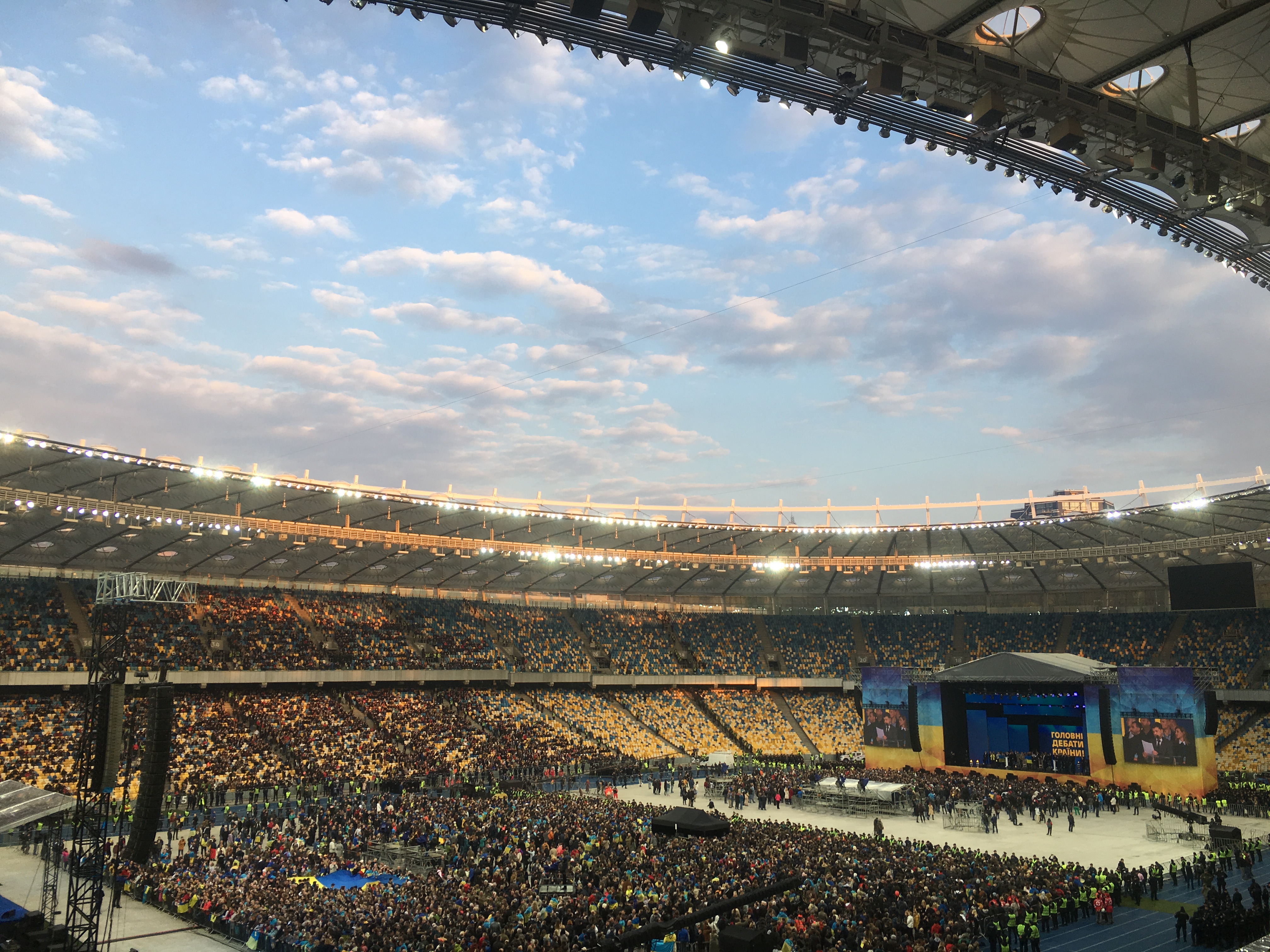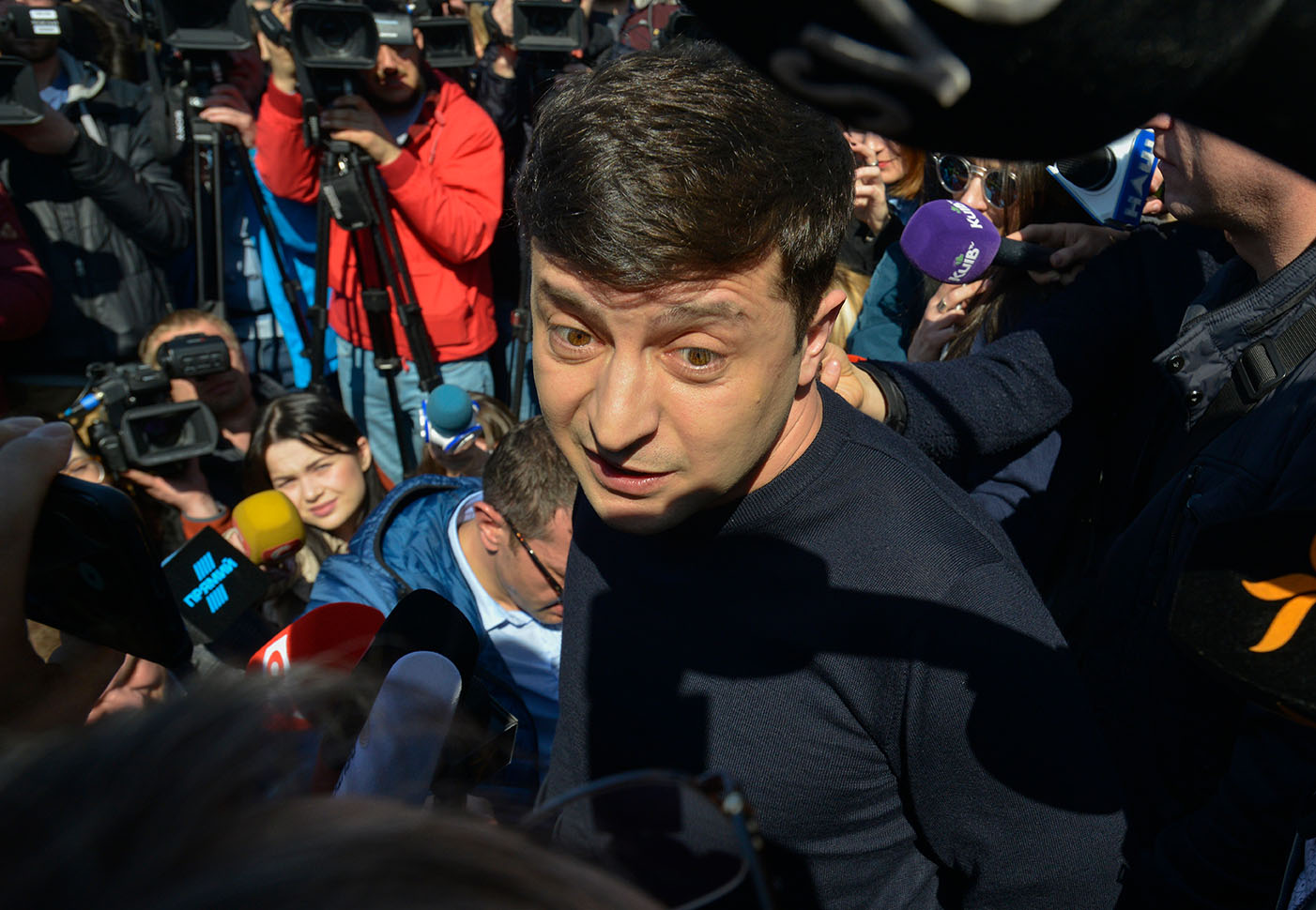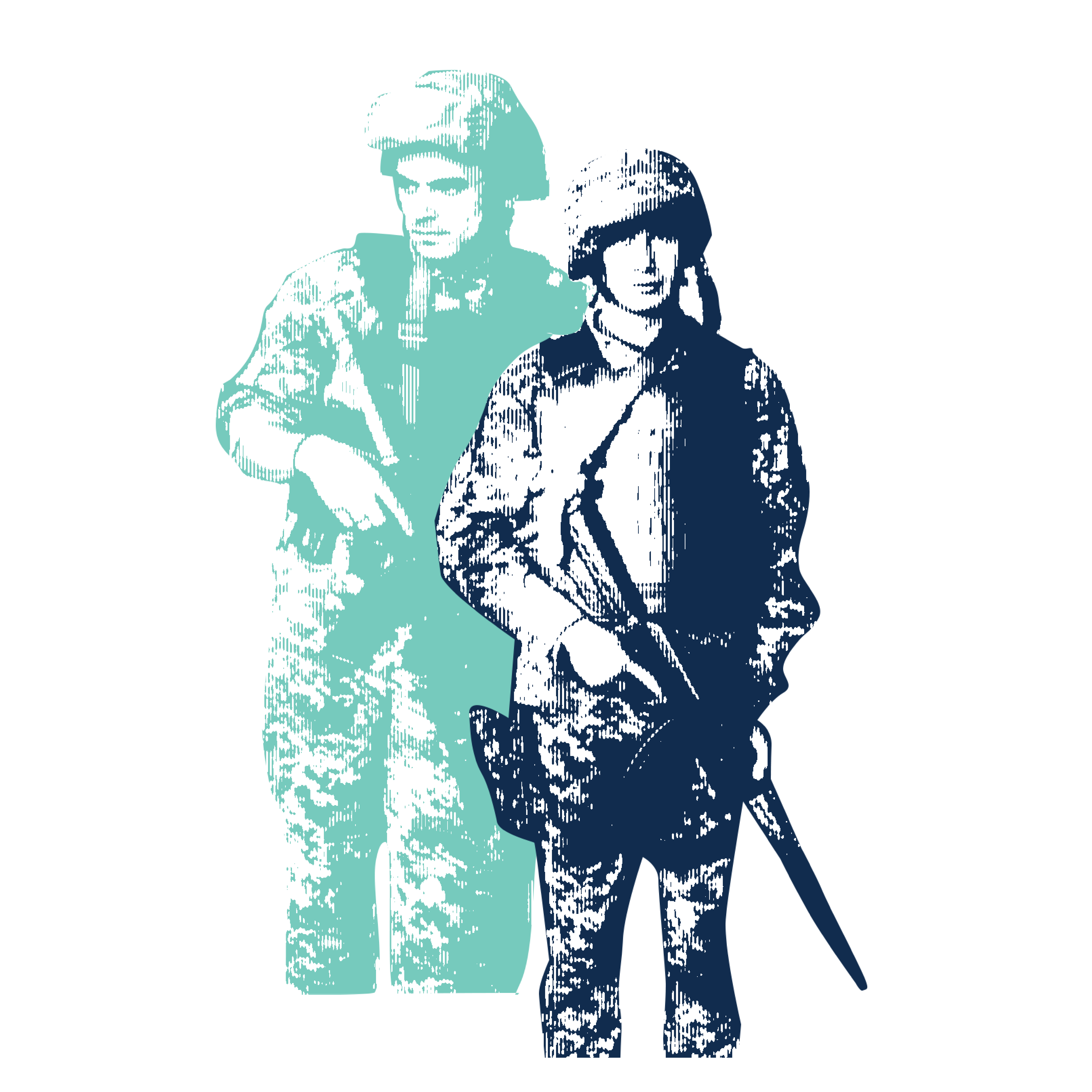
ON A RECENT SPRING EVENING in Kyiv, 22,000 people gathered under cotton-candy skies in the capitol city's Olympic Stadium. Millions more watched at home. In the center of the sea of blue and yellow seats, which matched the Ukrainian flags many were waving or wrapped in, were a pair of opposing stages where two men were about to debate. One was the oligarchic owner of a chocolate empire and a television station. The other was a comedian and the darling of a rival TV network, Ukraine's most popular. Both were candidates for the presidency of the country.
Ukraine has become known in recent years as a laboratory for Russia's experimentation with digital disinformation techniques. But television reigned supreme in a dirty four-month campaign that ended last week when comedian Volodymyr Zelensky delivered a crushing defeat to incumbent president and "chocolate king" Petro Poroshenko.
If the television airwaves were editorially independent, they might have contributed to a fact-based discourse during the election. But as Zelensky put it during the TV-spectacle-cum-presidential-debate: "all Ukrainian TV channels are controlled by oligarchs." Both Poroshenko and Zelensky enjoyed a flood of free and fluffy coverage from their aligned networks, neither of which hesitated to experiment with disinformation.
Zelensky, like Donald Trump in the 2016 campaign, is a political novice and expert entertainer whose campaign made for gripping political television. Poroshenko, like Hillary Clinton, was hampered by his much longer record of public service, which the networks—at least those he does not own—scrutinized. And Ukraine itself, like the United States, has a sensationalist, ratings-driven and politically polarized news environment that requires viewers to consume content from multiple sources in order to piece together a version of the truth.
Ukrainians, like Americans, searched in vain for measured, fact-based news. The question, as America heads into its own election, is whether such a thing still exists.
UKRAINE IS, IF ANYTHING, more polarized than America. The wealthiest individuals control TV networks, each with their own political perspective, each out only for their own personal gain. Freedom House, an American NGO, wrote in its 2017 Freedom of the Press report that "at least four major media groups, which together garner a television audience share of about 76 percent, are owned by powerful…oligarchs, whose primary businesses are not in the media sector."
Ukraine's oligarch network owners are a colorful bunch. Viktor Pinchuk, one of the wealthiest men on earth, who is married to the daughter of the second President of Ukraine, owns TV channel ICTV, criticized for broadcasting too much Russian content in the years since the Euromaidan protests in 2013 and 2014 that ousted the corrupt regime of Viktor Yanukovych. Dmytro Firtash, a gas magnate in exile over a corruption scandal, owns Inter, a network with a sympathetic view towards Russia. Rinat Akhmetov, Ukraine's richest man, owns "Ukraina."
1+1, the country's most popular channel—which hosts president-elect Zelensky's TV programs—is owned by Ihor Kolomoisky, whose bank the Ukrainian government nationalized after he defrauded his customers of $5.5 billion. (He is now in self-imposed exile in Switzerland and Israel, and whether Zelensky distances himself from Kolomoisky will be one of his presidency's early and most important tests). Other networks with less market share are owned by outgoing president Petro Poroshenko and former Prime Minister Arseniy Yatsenyuk.
Ukrainian television is a web of oligarchic influence, and much of the content it airs patently seeks to amplify that influence.
A homegrown disinformation phenomenon emerged in this murky information environment long before Russian disinformation gained traction. Reporters Without Borders defines the phenomenon, known as dzhynsa, as "material…aimed to improve or create a positive image of a political party, politician, or other individuals… which is not marked as advertisement in a way understandable to the audience." In short: Ukrainian television is a web of oligarchic influence, and much of the content it airs patently seeks to amplify that influence.
This lack of editorial independence is especially troubling given television's outsized influence. According to a recent survey by Internews, 74 percent of Ukrainians watch TV news on a weekly basis (compared with 50 percent of Americans who "often" turn to television for news). The candidates and their teams capitalized on Ukrainian media consumption habits, creating a campaign environment that seemed at times to be made-for-TV, high on sensation and scarce on substance.
The stadium debate was the climax of this campaign soap opera. Throughout the second round of the election, Zelensky and Poroshenko exchanged jabs in a series of video challenges about where, when, and how the debate would take place. It overwhelmed discussion about the candidates for three weeks, leaving major policy questions unaddressed. Matthew Schaaf, the director of the Freedom House office in Ukraine, agrees. "Despite a diverse media environment," he said, "Ukrainian TV served largely to bolster the partisan positions of stations' owners and those aligned with them rather than providing voters with the impartial reporting and analysis necessary for a well-informed electorate."
The rest of the country's political discourse didn't go much deeper, and television networks brazenly flaunted both laws and campaign rules in service of their candidates. 1+1, the network that broadcasts Zelensky's shows, famously ran a series that claimed Poroshenko was hiding his involvement in his brother's death. Poroshenko is suing the network for libel, and included its spurious report in an exhibition of fake news at his campaign headquarters.
"It's fucking shit," Dinara Habibullaeva, a Poroshenko advisor, said of the report before the second round. "We have this situation where…the population voted for a showman, an actor who is not well versed in politics, who is a puppet of Kolomoisky and the channel that Kolomoisky controls puts out fakes." She agrees with Poroshenko's decision to sue the network, and said she supported shutting it down entirely.
Ukraine and the United States are plagued by the same disease: a constant desire for and gratification through flashy, dubiously motivated infotainment in place of carefully sourced information provided for the public good.
1+1 also utilized Zelensky's celebrity status to circumvent rules about the "day of silence," preceding the election, when traditional campaign activities are prohibited. Though the network didn't broadcast political agitation, it ran a back-to-back lineup of Zelensky programs, including a documentary about the life of Ronald Reagan narrated by Zelensky himself. The National Democratic Institute, an American NGO which fielded an observation mission for the election, calculated that "in the two months before the first round, Mr. Zelensky was featured as an entertainer (rather than a candidate) on the 1+1 channel for 203 hours."
The Poroshenko campaign spread its share of sensational and unfounded claims about their opponent, claiming that Zelensky was a drug addict. It also utilized Poroshenko-connected media to dominate coverage of the race; NDI estimated that "in the week before the March 31 first round election, political advertisements supporting President Poroshenko appeared more than 1,400 times, amounting to nearly 10 hours of ads, more than twice the number aired on behalf of any other candidate." Oleksiy Matsuka, Editor-in-Chief of News of Donbas, a media outlet that serves Ukraine's war-torn east, said of Poroshenko's campaign: "the worst thing is that the sitting president resorted to using such dirty television tactics, underlining that this sort of approach is a norm for our tradition." Poroshenko's channels were dinged by the National Council on Television and Radio Broadcasting for their unbalanced and disproportionate coverage of the incumbent during the campaign period, as was 1+1 for its coverage of Zelensky.
The Council will turn to the stations for "explanations" of their behavior, but its power to levy fines against them is minimal, and Ukraine's public broadcaster—perhaps the only place Ukrainians can find nonpartisan, editorially independent content and which might balance the incessant warring between channels—is still nascent and is chronically underfunded. But beyond the structural challenges Ukraine and the United States are plagued by the same disease: a constant desire for and gratification through flashy, dubiously motivated infotainment in place of carefully sourced information provided for the public good.
As the United States careens into another presidential election driven more by personality than policy, television networks can choose to situate American political discourse in its own version of Ukraine's stadium, complete with insult-slinging candidates who embrace domestic disinformation and thousands shouting in support or dissent. Or it can relocate the discourse to a quieter room. That room might be smaller. It may not have captivating music or lights, but it's an environment where people are forced to listen to one another. It's an environment I hope to see develop in Ukraine along with the country's democracy, and one I hope not to lose as the United States heads to its next democratic test.






